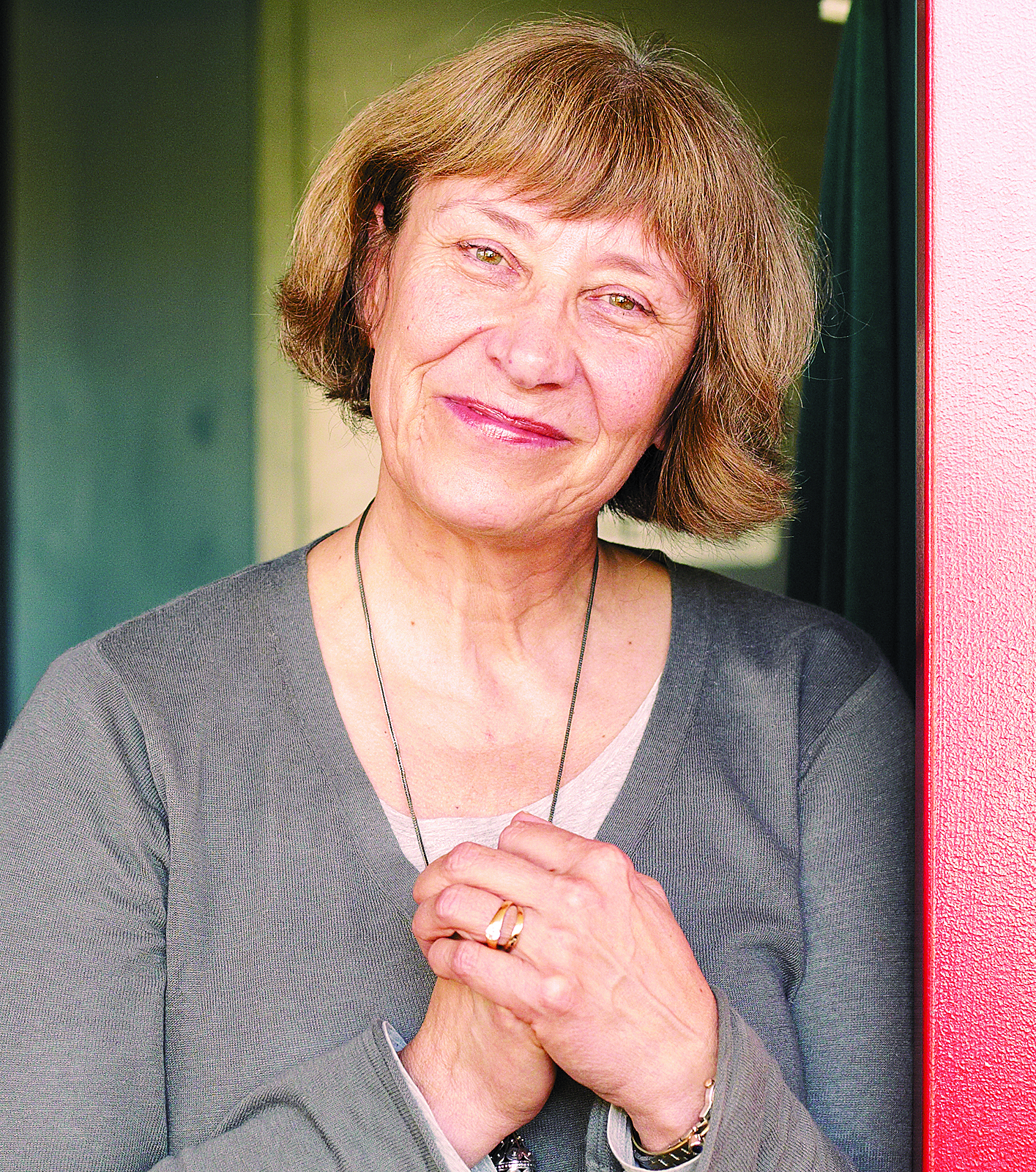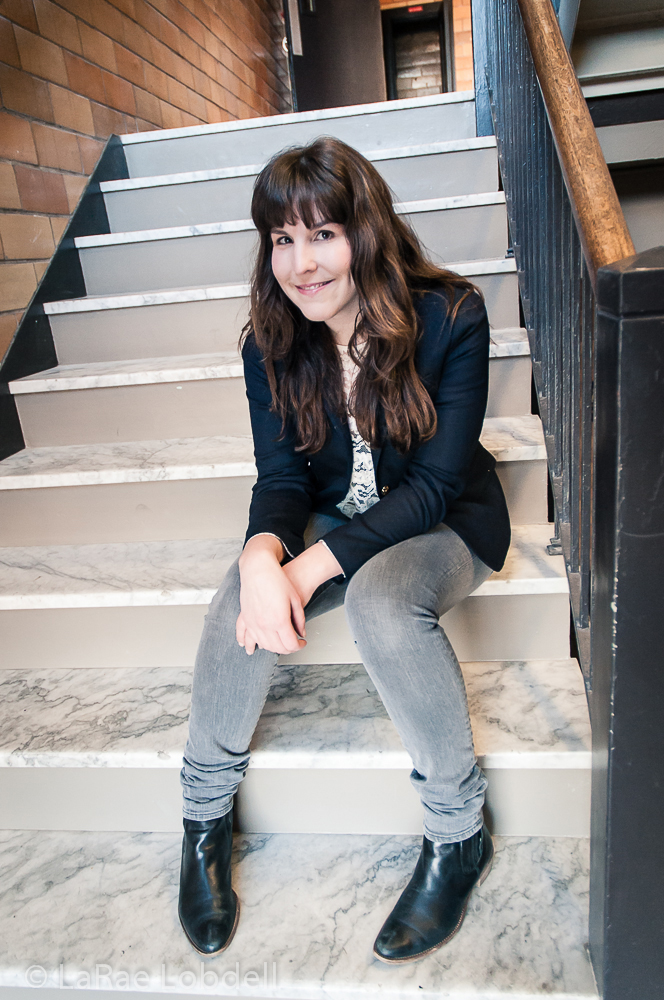It’s opening night of White Christmas at the 5th Avenue Theatre, and the cast has come out for the grand finale. The actors fill the stage wearing holiday outfits of red and green, as resplendent, if also slightly dorky, as a catalog cover. They’ve nailed the Irving Berlin tunes with the determined proficiency of so many master carpenters, and as they begin the reprise of the title number, suddenly it begins to snow, right here in the theater, tiny clumps of soap bubbles drifting into the audience. The crowd loves the effect and the show, and almost before the curtain comes down, they’re on their feet applauding wildly.
As I file out with the happy chattering audience, hearts filled with yuletide cheer and heads full of infectious tunes they’ll be stuck with for weeks, I also detect a warm glow of satisfaction that comes when a Seattle show has been well received. It’s the confirmation of a civic truth, one as well established as the rain, the coffee, and the awful traffic.
Here it is: Seattle is a theater town.
I know this because I’ve read it for years in airline magazines, tourist brochures, and every local guide book (including one I wrote back in 2002). Recent figures from Seattle’s Office of Arts and Cultural Affairs reveal that our Creative Vitality Index Score is a full 5.2 times the country as a whole! (The index measures things like arts organization income and employment.) “Obviously, this is a community that values and supports the arts sector,” said the office.
Oh, maybe we’re not New York or Chicago, the home of theaters like Steppenwolf and artists like David Mamet, William Macy, and John Malkovich. But we have five large professional mainstages: the Seattle Repertory Theatre, Intiman, ACT, the 5th Avenue, and the Seattle Children’s Theatre. Touring musicals and the occasional play take up residence in two splendid Vaudeville-era houses, the Paramount and the Moore. Dozens of smaller fringe theaters produce in venues scattered throughout Capitol Hill, downtown, and farther abroad. And there are respected midsized operations like Taproot, Book-It, On the Boards, and Seattle Shakespeare.
Even New York took notice of us recently, handing a 2006 Tony award for Best Regional Theater to Intiman. The Wedding Singer, an adaptation of the Adam Sandler movie which premiered this past January at the 5th Avenue, was also nominated for Best Musical. “This tells the world what we already knew,” Michael Killoren, director of Seattle’s arts office, told Variety when the Tony nominations were announced. “This is an important theater town. Creativity is in the water in this city.” (Of course, The Wedding Singer isn’t really a product of Seattle or its water. Like Hairspray before it, the musical was created by New York producers and brought in for a tryout in front of Seattle audiences.)
Knowing all this, surrounded by happy theatergoers in a holiday mood, and having watched, worked in, and thought about Seattle theater for the past 12 years, why was I so melancholy? Why did I find myself again questioning that civic truth that we’re a great town for theater? Why is it that every theater person I talk to, administrators, artistic directors, and artists, all feel the same thing—that it’s getting harder to produce theater in Seattle?
It could be because our theaters keep closing.
“When they sent out the press release about the closing, I honestly think the board believed that no one would really care all that much,” says Allison Narver, the artistic director of the Empty Space, which was shuttered in October after 36 years.
The company had weathered severe financial problems just two years ago, and had since cut its staff and number of shows in a season, and, most crucially, moved from its longtime Fremont home to a rent-free space on the campus of Seattle University. The company’s first two plays of 2006—solo powerhouse Lauren Weedman’s Bust and Paul Mullin’s Louis Slotin Sonata—seemed to be a sign that the company was back in business, serving up popular provocative stuff as good as anything they’d produced in the past 10 years. Weedman sold out several performances, and while Mullin’s show didn’t do quite as well, critics were enthusiastic.
But at the Monday, Oct. 23, board meeting, there was an ominous addition to the regular attendees: a bankruptcy lawyer. Two nights later, at a second meeting, the board asked for Narver and her managing director to leave the room, took a vote, and decided to close the theatre. By week’s end the press release went out and the Space was officially history.
It was only the latest, but perhaps the most heartbreaking, in a steady string of closures over the last decade that has included numerous midsized theaters (the Group, the Bathhouse, Center Stage, Alice B.) and scores of smaller companies, as well as the Seattle Fringe Theatre Festival. Tallying up the gain and loss columns on Seattle theater, there’s just no question that we have lost more venues, more companies, and more artists in the past decade than we have gained. The newest casualty may be Capitol Hill’s Northwest Actor’s Studio, a somewhat dilapidated but beloved rental for numerous small fringe groups. In early December, the managers announced they were $25,000 in the hole, and have been holding a series of fund-raisers, including burlesque shows and live bands, to raise the cash.
Every one of these closures had its own story of mismanagement or bad judgment or growing irrelevance once the major battles for multiculturalism in theater had been won. (The success of the Group, which focused on multicultural theater, and Alice B., a professional gay theater company, is that every larger theater in town now features plays by and about African-Americans and the gay experience as standard components of their seasons.)
At the Space, the immediate cause of death appears to be board-assisted suicide. At the time it closed, the theater had a deficit of $75,000—not chump change, but small compared to 2004’s crisis, when an emergency fund-raising effort raised $400,000 in a matter of weeks. Most of that money came from almost 3,000 individual donations that averaged just $176.
The trouble this time wasn’t just the immediate debt, according to board president Erik Blachford. In projecting the next season’s expenses, the Space board saw no sources for the required cash. “We could continue on and accrue debt, and if we were to go down, we would leave a lot of businesses and artists in our community with that debt,” Blachford says. “We weren’t confident that we were going to pay it off, so we did what we thought was the responsible thing.”
The Space’s board had only eight people, small for any nonprofit, and had added no new members (with new deep pockets or contacts) since the last crisis. Given this, and the fact that they were facing a substantial debt only two years after a massive fund-raising effort, the decision to let the theater fold instead of fighting is understandable.
Of course, a certain amount of opening and closing is expected in every industry. It’s even healthy, up to a point—thank the god of Rational Cuisine that there are fewer fusion restaurants open today than 10 years ago, for example. And the dot-com crash and post-9/11 whammy was tough for all sorts of businesses that depend on people with extra cash and leisure time.
In the case of theaters, they sometimes close for the best of reasons, like artists leaving to try their luck on the stages of New York or the soundstages of L.A., or admitting to themselves that their work is uneven, or just because they aren’t having fun any more. When these things happen, you might feel a tug of melancholy as you walk past a former theater that’s now a hair salon or vacant lot awaiting condos, but that’s all.
The death of the Empty Space stung. It was different. The very name was different, bold, cheeky, an homage to the influential book by renowned director Peter Brook. (Supposedly its name, and the gift of a Seattle salmon, were what lured Brook to town a few years ago with his acclaimed touring production of Hamlet.)
The Space was hip but experienced; the still-sexy uncle of every fringe or alternative theater in town. Practically every Seattle actor of a certain age worked with the company at one time or another. To younger theater artists, it served as an inspiration. Over the last decade, I must have heard the declaration “We want to be the next Empty Space!” a half dozen times from fringe companies (including one that I ran, briefly), all of whom dreamed of moving from their converted shop fronts or garages into custom-built 150-seat theaters.
It was also shamelessly provocative. Its mission statement confirmed this—”bold, provocative, celebratory”—but the proof was in how many playwrights premiered there when they were still raw and new and singeing audience’s hair—like Sam Shepard, Peter Handke, and David Mamet—or its controversial productions of tough work like a new adaptation of Jary’s perpetually offensive Ubu Roi.
And it was fun. Original weird musicals like Wuthering! Heights! and Vera/Wilde. Camp spectacles like Valley of the Dolls. And the repeated return of oddball powerhouses like Lauren Weedman, who premiered several of her strongest solo works at the Space. Actors had a blast working there more often than not, as you could tell from their performances.
None of this is to say that the work was always good or always even interesting, but I’d agree with Narver when she says that the Space sought to always be “failing, and failing boldly, and succeeding, and succeeding boldly.” (For the record, I never worked for the Space, either as a playwright or director.)
It’s Washington Ensemble Theatre, or WET, that’s mentioned, over and over, as the “next Empty Space” by many of the people I know. And the company deserves a lot of the hype. Their most recent ensemble production, Never Swim Alone, was a wicked and powerful burst of theater, a physically demanding three-hander about a pair of businessmen engaged in a life-or-death struggle for alpha-dog status. It walked a razor-thin edge between humor and violence, exciting as a prize fight and intriguing as a whodunit. The set, the commitment of the actors, and the style of the script reminded me of the best of what the Space had to offer.
When we went out for drinks after the show, I found myself equally charmed and impressed by these smart and articulate young UW grads who’ve built their own space and their own audiences in just two years. Everything about them makes a somewhat-grizzled theater guy like me cheerful: their talent, their enthusiasm, and the sheer amount of work they’re willing to undertake.
But it’s also clear that what WET excels at right now is the work, not the management. Company members have just started paying themselves a monthly stipend of $25 (though they pay guest artists more), their artistic structure is “still evolving,” and their modest 49-seat house still has a rent under $2,000 a month. They’ve yet to incorporate as a nonprofit 501c3—a move that allows people to give them tax- deductible donations, makes the group eligible for larger grants from corporations and foundations, and is generally perceived as a sign that you’re a “professional” company—and have only recently begun seeking candidates for their board. So while they deserve their hype as theater artists, seeing them as the Great Shining Hope of Seattle Theater is like predicting a future Pulitzer for your 12-year-old niece based on her prize-winning middle-school essay: It’s just too early to know.
Seattle’s theater scene is the product of several decades of growth, starting a decade or so before the Space’s founding in 1970, back, in fact, to 1963, when one of the buildings of the World’s Fair was transformed into the Seattle Repertory Theatre. ACT appeared in 1965 to provide more contemporary and adventurous fare, and Intiman appeared in 1972 with an emphasis on classical work. In the ’80s, relatively generous funders and the call for multicultural art gave us professional midsized companies such as the Group, Alice B., and Northwest Asian-American Theatre, all of whom focused on plays for underrepresented minorities. Then in the early ’90s, when Seattle got a double shot of a tech boom and some grunge-inspired cultural relevance, its fringe scene exploded, with dozens of companies starting up, as well as the glory years of one of the largest Fringe Theatre Festivals in the U.S.
When I came here in 1994, the result of all of this was a theater ecosystem as varied, lively, and thick as several square miles of Amazonian rainforest. ACT was moving into its magnificent new downtown home, the Rep and Seattle Children’s Theatre were both opening second stages, and midsized companies were soaring high in a blissed-out celebration of buzz. Actors and artists, drawn to whatever they thought was the Seattle mystique, were creating their own fringe theaters throughout Seattle, and despite the bewildering numbers of venues, audiences were solid from the Rep on down to tiny black box Fringe houses. But what I didn’t realize, what no one did, was how tenuous and unsupportable the scene was on every level.
The death of the Seattle Fringe Theatre Festival in 2003 was not just a single fatality in the ecosystem, it was a multispecies extinction. Literally hundreds of local companies and thousands of local actors performed in the festival over its 13-year history, and while some of the work was shoddy and amateurish, it also spawned dozens of new companies, as well as providing experienced companies and artists a place to experiment. (I was the Festival’s publicist in 2002–’03 and had a production in the Festival in 2003.) Since then, no significant funders or organizations have stepped forward to restart the festival, and the loss at the grassroots level—of artists moving from amateurs to potential professionals, of professionals moving into self-production and experimentation—has not healed.
At the same time, theater audiences have only gotten older and are not being replaced with younger patrons. Such a situation is difficult enough for companies that literally are seeing their patrons dying off, but with a company like the Space—that declared experimentation and provocation their core values—it was a dangerous situation. The Space’s audience was fundamentally the same folks who’d supported it in the ’70s and ’80s, but with a couple of extra decades tacked on. And older audiences have less patience at being poked, prodded, and disturbed.
“One thing that’s true is that when you’ve lived a while, you’ve endured a lot,” says Kurt Beattie, artistic director of ACT (who worked at the Space as managing director in the ’70s and ’80s). “There’s a certain thing that gets harder and harder to deal with, the special hating you do when you’re young—I think Roethke called it that. It’s not tolerable when you get older, unless it’s really artful.” What’s exciting to younger artists like Narver can sound like immature blather to someone 20 years past their youthful rebel phase.
That’s not to say that provocative work is necessarily the kiss of death. Susan Trapnell, ACT’s managing director, points out that while Steve Martin’s featherweight farce The Underpants was the company’s top box-office draw this past season, coming in strong at No. 2 was Martin McDonagh’s bloody black comedy of terrors The Pillowman. “I think it’s definitely economically perilous to do this sort of work,” Trapnell says. “But I don’t think it’s impossible.”
One hit the Empty Space took early on and which continues to threaten a number of smaller venues, is the development boom. For the last few years, the owner of the Space’s Fremont home had made significant rent increases. Moving to a less-convenient, if beautiful, facility at Seattle University was an inevitable reaction to the fact that the funky “center of the universe” in the last decade became the highly unfunky home of condos and high-tech business.
Other venues, including Annex Theatre, Brown Bag Theatre, Windowlight, and Pilgrim Center for the Arts haven’t been so lucky. The unstoppable march of gentrification has killed off numerous small fringe venues downtown and on Capitol Hill, and it shows no sign of slowing. In 2003, I was artistic director of Theatre Babylon and working to save our Capitol Hill performance space, the Union Garage, which ran afoul of a whole mess of code violations that eventually proved too expensive to fix. I met with several city officials, all of whom warned me that a stay of execution for the venue would be good only for three to five years. “In less than a decade, you won’t even recognize most of what you see today on Broadway or up and down Pike and Pine,” one city administrator told me.
Meanwhile, pickings have slimmed considerably for local actors. Film and TV productions dried up when Northern Exposure and Twin Peaks left town, leaving theater and such incidental work as commercials and video game voice-overs as pretty much the only paying gigs. Yet many directors steadfastly insist on casting the majority of their leading roles with out-of-town actors, using local actors almost exclusively in supporting roles.
The directors justify this by saying they want to cast the best actors they can find and claiming that their audiences demand a certain amount of out-of-town “star quality.” In the case of New York actor Ato Essandoh, who blew away critics and audiences in the recent Intiman production of Native Son, the performance sometimes proves the wisdom of the casting. But a more practical reason is that for artistic directors with ambition to work elsewhere, bringing out-of-town artists to local stages is a good résumé builder. Like any business, theater’s about who you know. And if the people you know work routinely in New York or other major regional theaters, your chance of getting out-of-town work goes up.
But if “hire locally” doesn’t become an aggressive philosophy at all of the theaters, we may soon lose what theater community we still have. These artists are our neighbors, and the work they create reflects the values, concerns, and aesthetics of Seattle in a way that out-of-town professionals can only superficially understand. Seattle will never be the draw of New York or L.A., but there’s no reason it can’t support a small and talented group of professionals, as well as mentor young artists who want to stay in town to continue their theater education with some experience on a professional stage.
For many directors looking to cast local productions, the Space was an invaluable link between the unsalaried work of the fringe theaters and the paying professional work of the mainstages. “The Space worked under the conditions of a professional theater. If a younger actor had worked there, you knew that they knew the drill,” says Beattie. “Young talented actors had a way to achieve vocation, a mentoring through their work. When the midsized theaters go, casting for us is so much more of a total leap of faith.”
Midsized theaters are critical to the health of a theater town, but they’re tough to run even during the best of times. A theater like the Space with a mere 150 seats and a budget of, say, $1 million, can lose money even when its shows sell out. And when they try to make up the difference by chasing down another $400,000 or so from corporations or foundations, midsized operations are in competition with the more experienced and better-staffed larger houses.
“If we don’t have the expertise of fund-raisers who can raise the big funds, what do we do?” asks Scott Nolte, artistic director of midsized Taproot Theatre. “Those personnel are increasingly expensive, and so we have to fall back on our board and expect them to do more legwork. If I have to compete with the Rep for a corporate sponsorship, they’ve got the history, the audience numbers that give them an edge.”
At the same time the midsized company’s aim to pay a living wage to some artists and staff, as well as provide a “professional” experience on their stages, means its budget is exponentially higher than a fringe company, where artists and staff are unpaid or paid a pittance. This goal was made even harder by the state auditor decision last year that artists and stage technicians can’t be treated as independent contractors. That ruling banned the small-but-appreciated stipends these companies had given some artists in the past. Now they must either work for free or for an hourly wage, and this extra burden on the theater’s payroll forces midsized companies to restrict cast sizes and rethink production budgets.
What we lost when we lost the Empty Space was more than a theater. It was even more than the assets of that company, the relationships carefully built among artists, staff, and volunteers and with corporate, foundation, and individual donors; more than the mailing lists, the offices, the subscriber lists. We lost a place where artists of promise and ability could aspire to perform. We lost a part of Seattle history that, to its credit, always fought to not be history but to be contemporary.
And we received another worrying sign that any complacency that we might have about this being a great theater town is probably misplaced. Unlike the rain, the coffee, or the traffic, our theater community is far from a reliable constant in our lives. There’s nothing wrong with a big holiday show at the 5th Avenue, and there’s certainly nothing wrong with smart experimental theater in a 49-seat house. But we’ve got some considerable work to do if we want to conserve all of the astonishing and valuable variety in the middle.
John Longenbaugh is a Seattle playwright and director. His weekly column on Seattle theater will start in this paper next week.








